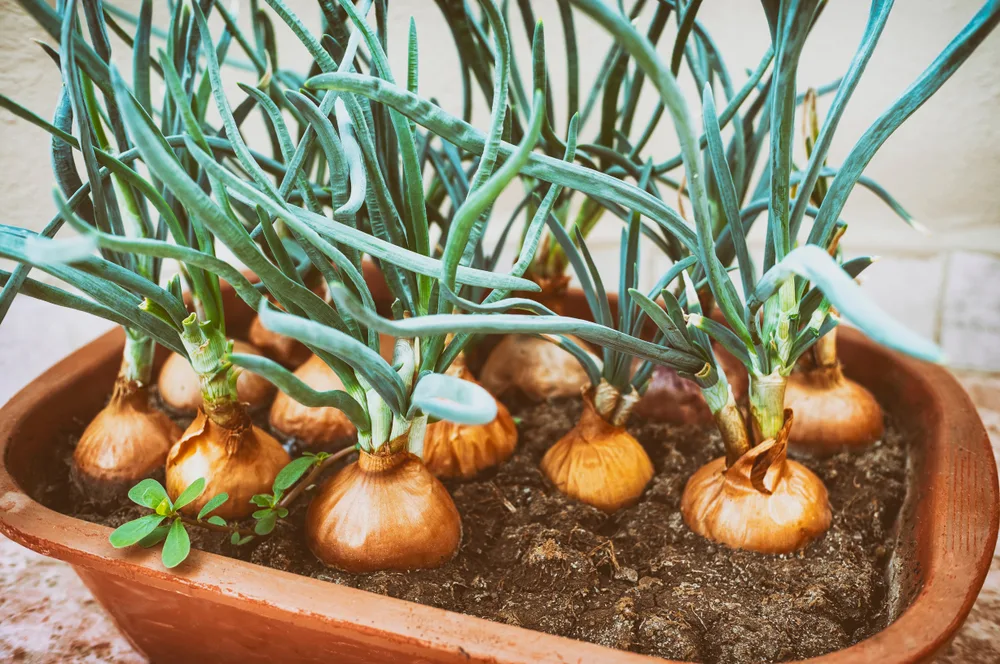Onions are an extremely versatile crop that has established itself as the principal part of many home-cooked meals, from plain veggie soups to pies and salads. Naturally, not all varieties are the same so certain onion kinds work better than others in different dishes. Moreover, many gardeners are confused as to why they often fail to yield a large bulb and are so susceptible to various diseases.
If you’re set on growing your own onions, the knowledge of simple facts about them can be a deciding factor when it comes to harvest. Here’s what you should know before you decide to cultivate different varieties of onions in your garden.
Choosing The Right Onion Type
The first step to take is to decide how you’re going to start – growing from the seed or the onion sets. Essentially, the latter option means that onions will grow to their full size in three and a half months. On the other hand, if you opt for seeds, your onions will also grow nicely. You should plant them indoors in the soil at temperatures above 10C to sprout.
Since onion is a photoperiodic plant, it’s quite responsive to the quantity of daylight it gets. The further away you move from the Equator, the days last longer during summer, and if the day is 12 hours long or more, the plant stops growing foliage and starts forming bulbs. So, the choice between long-day and short-day onions typically depends on the area where you live.
You could also opt for day-neutral varieties or intermediates that aren’t bothered by the length of the day and tend to bear abundant crops in regardless of the region. All onion varieties benefit from early planting given that both the day length and temperature play an important part in the development of the bulb. As cooler weather boosts the growth of bulky leaves, it’s best you start growing onions before the onset of warm weather. In Australia, that means planting in early autumn and harvesting in late spring.
Yellow Onion
This type of onion is the most common and predominant variety to grow. It has yellow skin, sharp odor and flavor, and flaky white insides. It’s widely used in cooking, particularly in stews and sauces. You can grow it both from sets and seeds, and the improved Setton type comes highly recommended – it offers a strong flavor, a more consistent shape than other traditional types, gives a rich yield, and is easier to store than other kinds.

Red Onion
In comparison to yellow onions, red ones offer a sweeter taste so they make a great choice for many types of salads. They’re best prepared when finely chopped for guacamoles, but they can also be easily preserved. Red onions are a two-yearly plant, which means their life cycle is two years long. During the first year, the seeds grow, leaves are formed and tiny bulbs thrive underground. During the second year of the life cycle, the bulbs mature.
Garlic
Garlic is among the most effortless plants to grow as it’s quite unbothered by neglect. To plant and grow garlic, you should directly place the cloves in the soil, bury them under grass clippings and straw, and forget about them till spring. Also, you should plant this onion together with other vegetables, such as tomatoes, carrots, peppers, and cruciferous veggies (cabbage, kale, collard greens). Garlic is easy to grow and it is also a natural repellent for aphids, Japanese beetles, rabbits, mice, rats, moles, and even snakes.
What’s more, this plant provides numerous health benefits due to its high content of allicin, as well as anti-oxidant, antibacterial, and anti-fungal properties. Garlic can alleviate many common ailments such as the common cold, high blood pressure, tick bites, and athlete’s foot.
Shallots
In contrast to onions, which are raised separately from bulbs into plants with a singular stem, shallots grow in batches, sprouting from a single clove, quite similarly to garlic. Most shallot kinds are smaller in size than onions, have a finer structure, and contain less water so they should be cooked more tenderly. Shallots also have a more subtle and sweeter taste than onions.
Egyptian Walking Onions
The Egyptian walking onion spawns from bulbs and appears as they’re walking through your garden. In spring, its thin green leaves are picked and consumed as chives. Egyptian walking onions may be harvested in their early development as spring onions or spared for later until they reach the size of shallots. If the plant is allowed to remain in the ground, it’ll eventually develop tiny bulbs at the leaf tips which will grow heavy and bend the stem down until the bulbs touch the ground. They will then produce roots and develop into a new plant.
Home-grown onions are a delightful vegetable for all garden enthusiasts, whether they’re experienced or just beginners. If you have a green thumb and you enjoy cooking as well, the tips listed here will help you produce your own alternative to sub-standard, store-bought onion varieties, so you can experience all the benefits of flavourful dishes made of home-grown vegetables.




